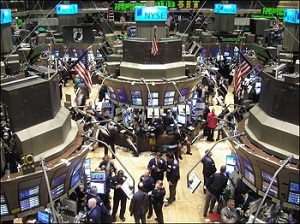Courtesy of Pam Martens
A group of nine financial firms, including an admitted felon and two high-frequency trading powerhouses, announced this week that they plan to open a national stock exchange to compete head on with the New York Stock Exchange and the Nasdaq. We’ll detail those players shortly but first some necessary background to explain why this plan must never come to fruition.
Yes, our two major stock exchanges are a viper’s nest of conflicts of interest and in desperate need of reform, but this motley crew can only make matters worse.
Following the 1929 stock market crash, the U.S. Senate conducted three years of hearings into the brazen self-dealing and rigged trading by the major Wall Street firms that resulted in an epic crash that eventually erased 90 percent of the stock market’s value, led to the collapse of thousands of banks, and brought on the Great Depression. The hearings generated front page headlines for years. The public anger was so great that Congress was able to pass two sweeping pieces of legislation: the Securities Act of 1933, which mandated that investors receive significant information on securities being offered for sale to the public through a Federal registration process; and the Securities Exchange Act of 1934 which created the Securities and Exchange Commission and empowered it to register, regulate and oversee brokerage firms, clearing agencies, and, importantly, stock exchanges.
The hearings also led to the passage of the Banking Act of 1933 (a/k/a Glass-Steagall Act), which barred the corruption-prone trading houses of Wall Street from affiliation with commercial banks, whose deposits became Federally insured under the Act. This was meant to prevent runs on Wall Street brokerage firms from turning into runs on the nation’s commercial banks and a full-scale banking panic. The Glass-Steagall Act prevented another epic Wall Street crash for 66 years. Then the Bill Clinton administration, eager to please big money donors on Wall Street, repealed the Glass-Steagall Act in 1999.
Just nine years later, Wall Street collapsed the financial system and the economy again, leading millions of Americans to lose their jobs and their homes and resulting in subpar annual GDP growth ever since. The 2008 crash also resulted in the largest taxpayer bailout of the Wall Street banks in history and trillions of dollars in new national debt from fiscal spending to shore up the sagging economy.
…




